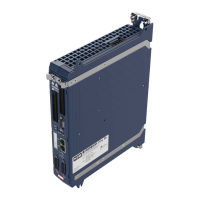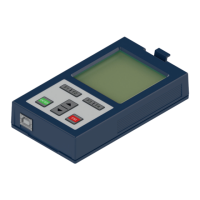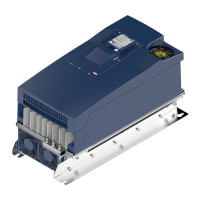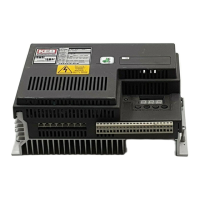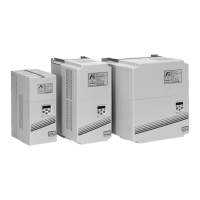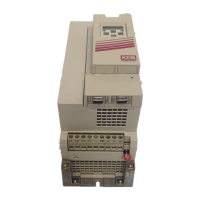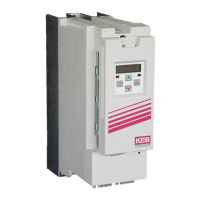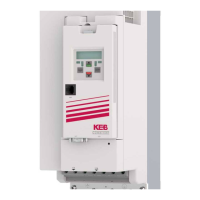The speed up to which the rated torque dr09 rated
torque applies (before it is reduced according to a 1/x
function) is shifted depending on the DC link voltage.
If the DC link voltage >= dr28 Uic reference voltage,
the rated speed applies.
If the DC link voltage is lower, the speed for the 1/x
curve is reduced proportionally.
4.4.25.1 Standard display
100% corresponds to the rated motor torque as long as the current torque limit is
higher than or equal to the rated torque.
The cause of a lower torque limit (ru50 / ru51 actual torque limit) can be the re-
duced torque in the field weakening range or the setting of a lower torque limit via
the cs parameters.
The formula for ru80 relative torque is:
ru50 / ru51 > 100%
=> ru80 = ru24 actual torque
ru50 / ru51 ≤ 100%
=> ru80 = ru24 / ru50 (or ru51)
4.4.25.2 Extended display
Parameter ru80 relative load is used to display the load of the entire drive system
consisting of inverter, motor and application against torque and thermal limits.
4.4.25.2.1 Inverter / motor limits (drive reference)
The torque-dependent drive load is calculated from the current torque, torque limit
and rated torque.
The calculation of the torque limit depends on the parameters that define the in-
verter maximum current and on the parameterization of the limiting characteristic.
Additionally the boundary conditions resulting from the data of the power unit al-
ways apply (current, switching frequency limits).
Reference value for a positive torque is always the positive limit, for a negative
torque the negative limit.
4.4.25.2.2 Torque limit of the application (application reference)
The maximum permissible torque can also be defined by the application, e.g. if a
connected gear can only transmit a certain torque permanently.
The reference of the application load can be defined with the setting of application
reference (bit 4,5).
The actual torque used for the load calculation is always the motor torque regard-
less of any gear factors.
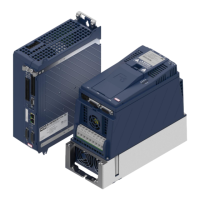
